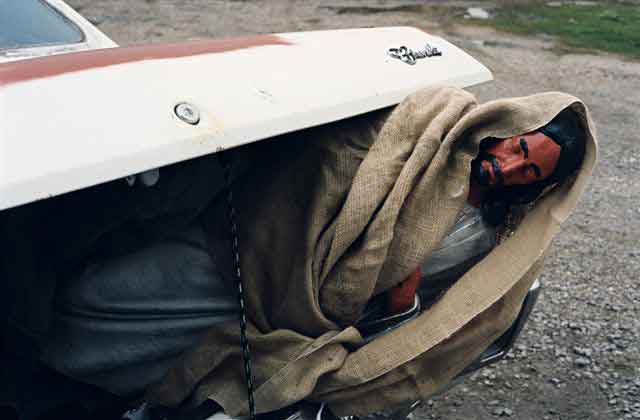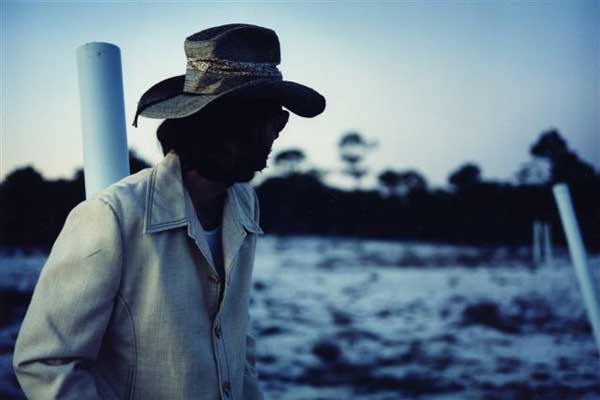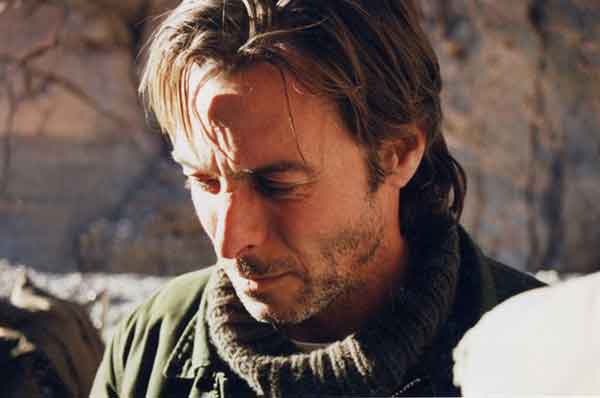SEARCHING FOR THE
WRONG-EYED JESUS
 |
Review by Allison Firor The first time I knew I was somewhere special, I was seven-years-old and half naked in a South Kentucky holler. It was mid-July, and I was sprawled on a bare mattress, my left leg straight out the window of the loft where I slept – or tried to sleep, if the heat would allow it. I lay there, panting, strangled by the oppressive air, staring at the stars through a hole in the roof. A centipede scuttled across my stomach. Too hot to shriek, too tired to struggle, I grabbed it and flung it as hard as I could. I remember it curling around my finger. Some twenty years later I am still trying to tell this story – still trying to capture the South as it captured me – so that I might bring others to the place where I woke, in shock, to centipede legs on the wall. The bug had splattered. The summer fever broke. And each became one of a million haunting pieces of the place that I call home. Inspired by Jim White’s 1997 album “The Mysterious Tale of How I Shouted Wrong-Eyed Jesus,” director Andrew Douglas and writer Steve Haisman went in search of the elusive Southern muse, and asked Jim White to lead them to it in their non-fiction film “Searching For The Wrong-Eyed Jesus.” What they found in the pinewoods and black swamps and county routes of the southeastern United States are the sordid pieces of a lonely landscape that "trip-folk" artists like Jim White were born to collect. Douglas follows White through a rambling journey to gather these pieces, and what he records is a gothic hymn of a hidden but hardly-forgotten place. Accompanied by a 300-pound concrete Jesus (which he beds in the trunk of a Chevy Impala), White leads a road trip via head-trip through the same murky aesthetic that writes his music. On the course of this journey we writhe on the floor of a fire-breathing tongue-talking Pentecostal church, lament the olden days of a coalmine with a banjo-playing bard (the inimitable Lee Sexton), ponder the collective loss at a truck stop frequented by the downtrodden and toothless, and freak dance to classic rock in a juke joint filled with God-fearing sinners in pinch-rolled jeans. White’s tour is embellished by a Greek chorus of staged performances from artists equally stoned on the South, who tell their soggy stories from the partially submerged porch of a floating swamp shack (The Handsome Family), on the dingy floral spread of a motel bed (David Johansen), and in a haunting and beautiful cinematic duet in a barbershop/beauty parlor (Johnny Dowd and Maggie Brown, who throughout are strumming a guitar and setting curls, respectively). All the songs on this musical tour were recorded live on location, and contain the audible ghost of a storied land. When I first saw David Eugene Edwards of 16 Horsepower walk through the pines, bearing his soul on his own rendition of Wayfaring Stranger, I was certain that he was singing what the pines would sing if they’d been born as something other than trees. And Melissa Swingle, as The Trailer Bride, playing Amazing Grace on a musical saw to a spellbound backwoods audience, gives me the shivers in the DVD extras as she sings acapella with a haunting desperation that rivals her mournful saw. Intermixed in all this song is the distinctive drawl of Harry Crews, a cult-novelist and nostalgic raconteur who can’t help but make a short story longer (and weirder, and fuller, and more real than anything else I’ve read about the South). He limps along a thin dirt road and talks to us, to Jim, to whoever else might be in the car, and we listen to him in the same way we hear his novels – enrapt, hiding behind parted fingers. And then there is Jim White, as
gracious host, who blends his own gentle musings with the anecdotal
thoughts of the locals, people from the sticks, the hills, over
yonder, found beneath the rocks and stones of every place, if
only we’d turn them over. Most pictures of the South don’t do justice to the color green that grows there, nor to the murky browns and blood reds that stick to the cars and feet. But Clive Howard as art director and Andrew Douglas as cinematographer come close, capturing what is in the exact way people remember it – hauntingly beautiful, slightly surreal. You come away from this film feeling mosquito-bitten, like you’d fallen asleep in the woods and woke to a world that went on without you. And with camera work and editing that share the same drawl as the language, you can’t help but feel like you’d lived there by the end of it. Drawing a haphazard plot with cinematic poetry, this film is what happens when you take a place and wring it out. What remains is what clings, and what clings is what stings, and what stings are the blatant stereotypes that plague the American South. For the critics who are tired of the literal bludgeoning imposed on the place, and for me, who needs it beyond sensible explanation, it isn’t easy to see a portrait like this of a region I know well, because in it I miss the cosmopolitan ways of the great southern cities where many friends, and their varied cultures, thrive. But there is purpose to this omission, a higher meaning that flies over the heads of those who write this film off as freak exploitation, as a southern gothic extravaganza. Andrew Douglas and Jim White aren’t saying that the other South doesn’t exist. They’re just saying it doesn’t live in the Impala. Part pseudo-documentary, part music video – Searching For The Wrong Eyed Jesus is exactly the story of the South I know. In it, I see the place I love and the sweat I’ve lost to call it home. From the dust-covered windows of Jim White’s Chevy, and from a trunk with bullet holes so my junkyard Jesus can breathe, I am, again, acutely aware of the debris that litters our Southern hearts and highways, and of the oppressive heat that keeps me there. Allison Firor is a Southern writer/artist/photographer/poet
who, when not |
|

